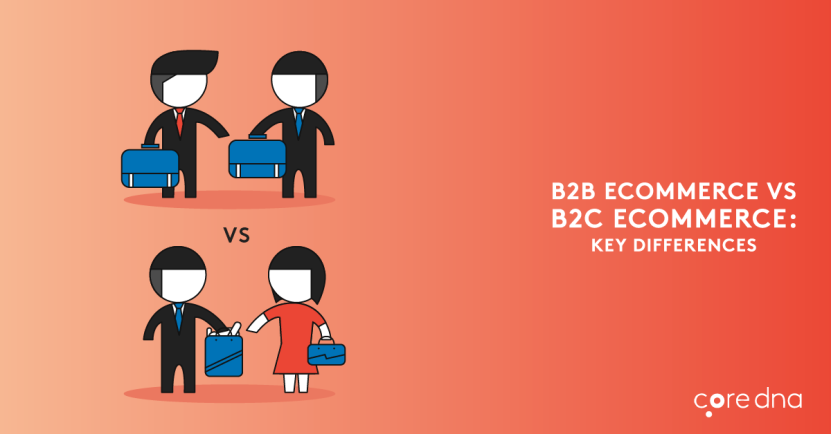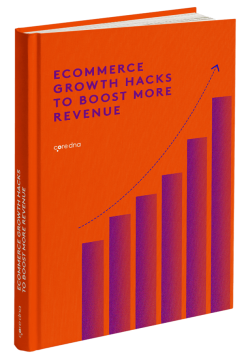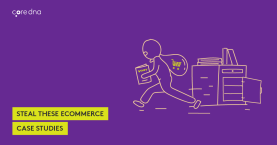Comparing B2C eCommerce To B2B eCommerce

It’s easy to see the eCommerce world as one, big, universal market. After all, it’s just about selling products and services online, right?
While that may be true, there are some vast differences between the B2C eCommerce and B2B eCommerce.
In a hurry? Here are the key differences between B2B and B2C eCommerce:

eCommerce Growth Hacks
29 tried-and-tested eCommerce growth hacks you can try.
B2C vs B2B
B2C stands for ‘Business to Customer’, it’s the concept that most consumers will be familiar with. When Target sells products via their website, they’re engaging in B2C eCommerce — because they’re selling to customers.
B2B, on the other hand, stands for ‘Business to Business’, and is used to refer to transactions between two companies. So, a wholesale manufacturer selling to a retailer is engaging in B2B eCommerce.
Below we explore the key differences between B2B and B2C eCommerce that make these completely unique online buying experiences.
[B2B vs B2C eCommerce #1] Overall buyer experience
B2B buyers are professionals that are buying because it’s required for their job. Your product is fulfilling a specific company need. The buying decision won’t be spur of the moment but instead planned for. B2B buying schedules are often synced up with departmental needs.
In B2C stores the customer experience is much different. They will be buying because your product fulfills an emotional need. B2C purchases are going to be driven by desire and motivation. Fulfill a pressing need and people will buy your product. With B2C your website needs to be streamlined to reduce any points of buyer friction, such as difficulty in adding products to the cart or having a lengthy checkout process.
B2B customers will go through a different purchasing methodology. Their decisions are more based on logic, facts, and finding the best product for the best price. Sure, emotion does come into play, it’s near impossible for it not to. But, it’ll be a need-based purchase that affects the bottom-line of the business, and not a decision made on a whim.
“B2B customers decide based on logic, facts, and finding the best price.” – Click to Tweet.
In terms of your sitewide buying experience, the UI doesn’t matter quite as much in B2B. Sure, forward-thinking B2B stores will upgrade their sites to suit the latest buyer preferences. But, more important than the design of your store is the ability for the buyer to find relevant information and locate the products they want.
[B2B vs B2C eCommerce #2] Group vs. individual decision making
Most B2B orders are placed via a committee or a team. It’s rare to be dealing with a single decision maker when selling B2B. Usually, you’ll have multiple people who need to approve the sale. One way to improve your chances of landing the sale is to provide the decision-maker with all of the relevant materials needed to make an educated decision.
“In B2B sales, you need to provide the decision-maker with all of the relevant materials needed to make an educated decision.” – Click to Tweet.
With B2B you’ll typically also have the ability to create multiple customer accounts within a single business. So, you’ll have a management account that can review the order before it’s placed, along with a purchaser account to actually choose the products from your store.
With B2C the purchasing approval process isn’t something you’ll have to worry about. You’re dealing with a one-on-one customer decision. This can make the B2C sales process much faster, as all you’ll need is a single person to pull out their credit card to make the sale.
That is why in B2C you’ll see an emphasis on persuasion tactics and getting people to check out a “not to miss” offer more directly. In eCommerce email marketing, for instance, the B2C retailers in fashion or electronics have a tendency to go for urgency triggers and have multiple cycles with new collections each year.
[B2B vs B2C eCommerce #3] Long or short buyer lifecycle
Most B2B buyers will buy from you for a very long time. Once they’re found a supplier that fills their business need there’s really no need to switch unless new advancements come into the field, or you happen to get undercut by a competitor. Now, the customer acquisition process will take longer in B2B than in B2C, but you’ll see a higher revenue per customer, as you’ll see below.
“The key to B2B eCommerce is to make it easy for users to login and re-place orders” – Click to Tweet.
B2B orders are typically much higher than B2C orders with the average order being well over $400. B2B buyers are looking for lifetime partnerships, compared to B2C buyer relationships which are often one-off or sporadic in nature. This makes the lifetime value of a B2B buyer much higher than a B2C buyer.
Repeat orders are also a necessary feature in B2B eCommerce. Your customers should be able to easily login and place (and re-place) orders time and time again. With B2C eCommerce, you won’t get as many repeat or bulk orders. But, still having a user account with past orders will be important regardless of your store type.
[B2B vs B2C eCommerce #4] Feature or benefit based marketing
With B2B, the core focus will be on what your product does and the tangible need it solves. You’ll be leaning heavily towards the features of the product, instead of the benefits, the business will receive. In order for a B2B buyer to make a purchase they’ll need to see how ordering from you will help their bottom line, while fulfilling a need.
The B2B market has a greater penchant for knowledge surrounding your product. What will the ROI be? How will it save them time and money? Why is your product the best financial investment for their business?
“B2B eCommerce = Focus on features. B2C eCommerce = Focus on benefits.” – Click to Tweet.
B2C markets are more emotional in nature, so your marketing will cater more towards the benefits of the product. Your product’s message must be simple, clear, and easy to understand. You’ll be focusing more on the end result of your product, on what your prospects life will look and feel like with your product. With B2C you’ll take the time-tested approach to marketing, which is appealing to benefits, not features.
[B2B vs B2C eCommerce #5] Price discrepancies
In B2B markets it’s common practice for prices to be hidden until a user creates an account. Prices are also generally more negotiable and based upon an agreement. B2B customers will receive different prices for the products based upon future purchase agreements, past buying history, and more.
“B2B pricing can get a little more complex compared to B2C pricing structures.” – Click to Tweet.
With B2C eCommerce the prices are always spelled out, what you see is what you get. Now, you may offer customer discounts for loyal customers, or coupons when you’re running sitewide specials. But, there isn’t any built-in negotiation for the price of the products you’re selling.
This can make B2B pricing a little more complex, as it’s customer specific and based on a tangible relationship with the buyer. Not priced just to move the most products.
Fundamentally different, yet still pretty similar
Overall, any eCommerce store owner needs to provide their customers with a storefront that’s easy to navigate and find products they’re looking for while supporting it with solid marketing materials. However it’s important to understand the difference between B2B and B2C, so you can craft the most relevant buying experience possible.
Are there any differentiating factors between B2B eCommerce and B2C eCommerce we didn’t highlight above? Share away in the comments below!













